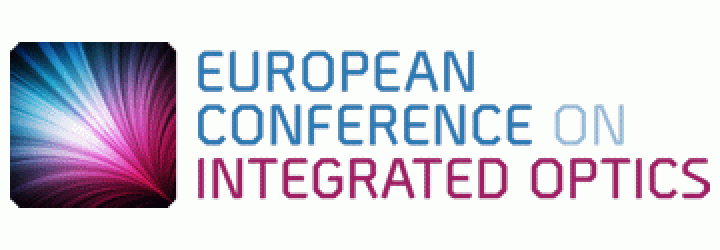Chip-Based Nonlinear Photonics (Invited paper)
Alexander L. Gaeta
Columbia University, Applied Physics and Applied Mathematic
ABSTRACT
Over the past decade silicon nitride has emerged as an exceptional material for nonlinear optics and has led to realization of ultrahigh-performance photonic devices in fields from data communications to medicine. I will discuss nonlinear photonics using silicon-nitride chips that can be used to create chip-based optical frequency combs via supercontinuum generation and in microresonators.
Keywords: nonlinear photonics, four-wave mixing, optical frequency combs, supercontinuum generation
Chip-Based Nonlinear Photonics
4H-SiC Microring Resonators for Nonlinear Integrated Photonics
Yi Zheng1, Minhao Pu1, Ailun Yi2, Xin Ou2, Haiyan Ou1
1 DTU Fotonik, Technical University of Denmark, Building 343, DK-2800 Lyngby, Denmark
2 Institute of Microsystem and Information Technology, Chinese Academy of Sciences, Shanghai, China
e-mail: haou@fotonik.dtu.dk
ABSTRACT
We demonstrate efficient four-wave mixing in high Q 4H-SiC microring resonators. We achieve a four-wave mixing conversion efficiency of -21.7 dB in a microring resonator with 79 mW pump power. Thanks to the strong light confinement in SiC waveguides with sub-micron cross-section dimensions, a high nonlinear parameter (γ) of 12.5 W-1m-1 is obtained, from which the nonlinear refractive index (n2) of 4H-SiC is estimated to be 9.2±0.4×10-19 m2/W at telecom wavelengths.
Keywords: Nonlinear optics, integrated optics, microresonators
4H-SiC Microring Resonators for Nonlinear Integrated Photonics
The impact of lateral leakage on the nonlinear optical waveguide design in lithium niobate on insulator (LNOI)
Andreas Boes1,2, Lin Chang2, Thach Nguyen1, Markus Knoerzer1, Jon D. Peters2, John E. Bowers2, and
Arnan Mitchell1
1 School of Engineering, RMIT University, Melbourne, Victoria 3001, Australia
2 Department of Electrical and Computer Engineering, University of California Santa Barbara, CA 93106, USA
e-mail: andreas.boes@rmit.edu.au
ABSTRACT
In this contribution we show that lateral leakage at the second harmonic wavelength can cause a reduced nonlinear optical conversion efficiency in lithium niobate on insulator ridge/rib waveguides. By designing the waveguide parameters carefully, we avoided this effect, which enabled us to demonstrate a nonlinear optical conversion efficiency of ~780% W-1cm-2 in these waveguides.
Keywords: Nonlinear Optics, Lithium Niobate, Lateral Leakage, Quasi-Phase Matching.
An Integrated Silicon Photonic Nonlinear Interferometer
Gary F. Sinclair 1, Takafumi Ono 1, Damien Bonneau 1, Mark G. Thompson 1,
Jonathan C.F. Matthews 1, John G. Rarity 1
1Quantum Engineering Technology Labs, H.H. Wills Physics Laboratory, University of Bristol, BS8 1TL, United Kingdom
2
e-mail: gary.f.sinclair@bristol.ac.uk
ABSTRACT
We construct a nonlinear interferometer on a silicon photonic chip, where interference occurs between the production of photon pairs generated from two different spontaneous four-wave mixing waveguide sources.
Nonlinear interferometers have demonstrated an improvement in measurement sensitivity beyond the shot-noise limit and offer the ability to sense and detect using light at different wavelengths. This demonstration of nonlinear interferometry on a silicon photonic chip establishes this important technology in a scalable and manufacturable chip-scale platform for the first time.
Keywords: Optical interferometry, Silicon photonics, Nonlinear optical devices
An Integrated Silicon Photonic Nonlinear Interferometer
Nonlinear silicon photonics for optical frequency synthesis
Neetesh Singh1, Ming Xin1, Nanxi Li1,2, Diedrik Vermeulen1, Alfonso Ruocco1, Emir Salih Magden1,
Katia Shtyrkova1, Erich Ippen1, Franz X. Kärtner1,3, and Michael R. Watts1
1Research Laboratory of Electronics, Massachusetts Institute of Technology, 77 Massachusetts Avenue,
Cambridge, MA 02139, USA
2John A. Paulson School of Engineering and Applied Science, 29 Oxford Street, Harvard University, Cambridge,
MA 02138, USA
3Centre for Free Electron Laser Science (CFEL)-DESY and University of Hamburg, Notkestrasse 85, 22607
Hamburg, Germany
Email: xinm@mit.edu, neeteshs@mit.edu
ABSTRACT
Optical frequency synthesizer, an optical counterpart of electronics frequency synthesizer is shown at chip scale using silicon photonics. We utilize the nonlinear properties of silicon, namely 3rd and electric field induced 2nd order effects for f-2f self-referencing. The frequency instability obtained in the telecom band is 1×10-12 at 1s level, comparable to a bench-top commercial optical frequency synthesizer system. An all on-chip silicon frequency synthesizer will have applications in the next generation optical communication, spectroscopic,
detection and ranging systems making them widely available using the CMOS facility.
Keywords: Frequency synthesiser, ultrafast nonlinear optics, integrated optics, supercontinuum generation
Nonlinear silicon photonics for optical frequency synthesis

